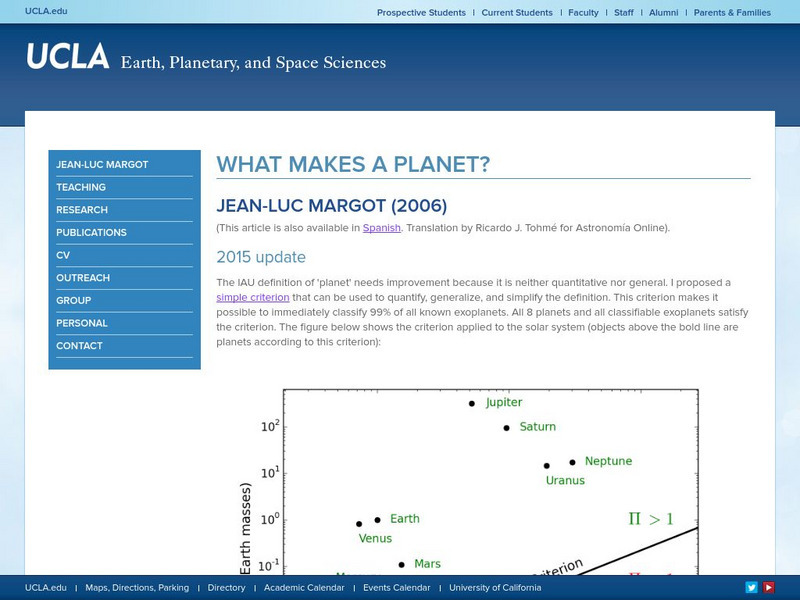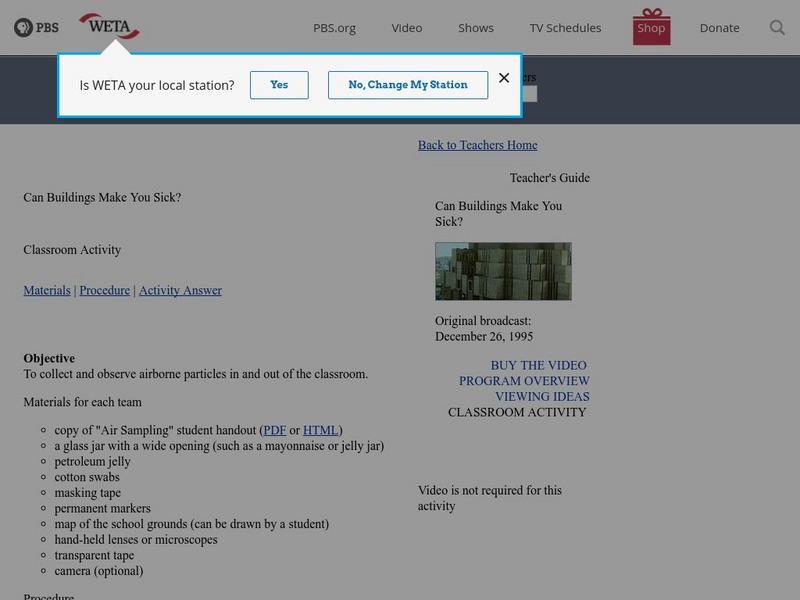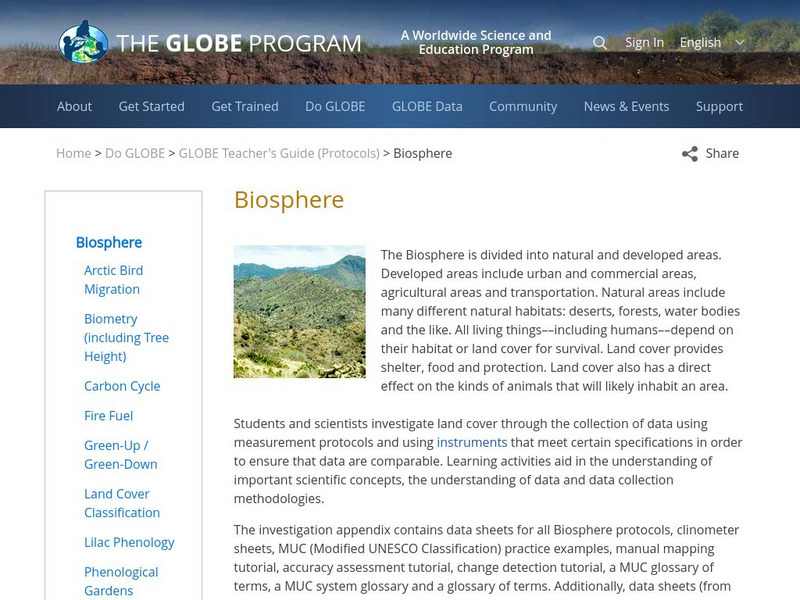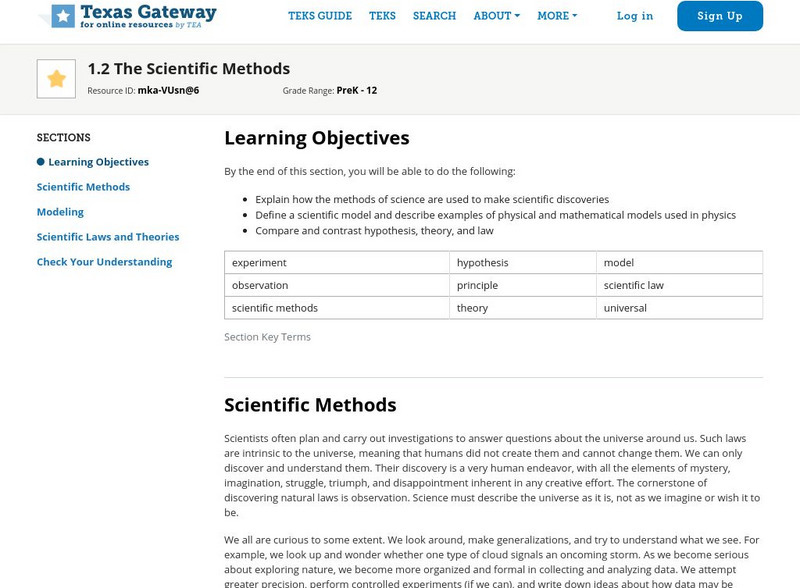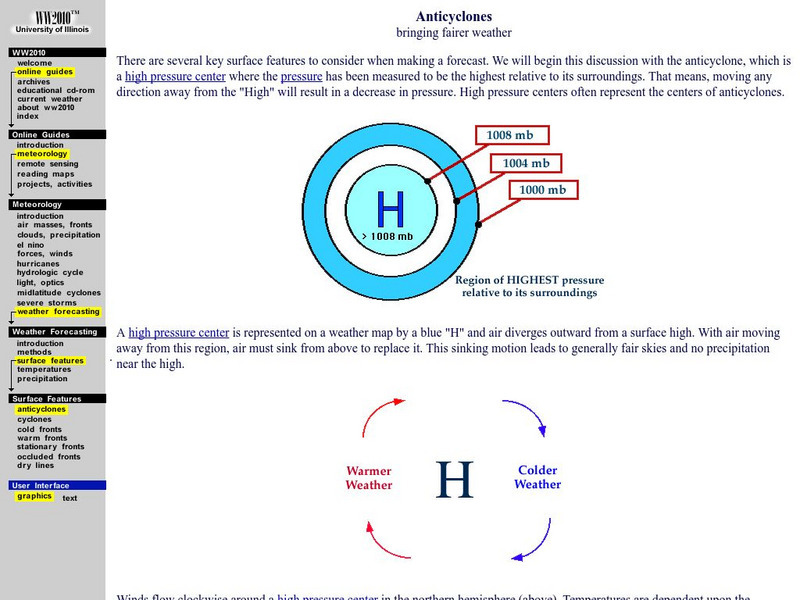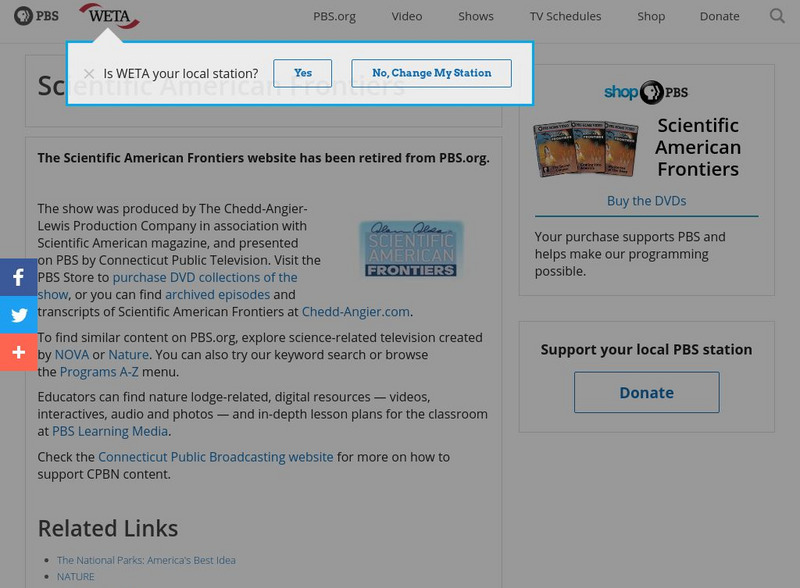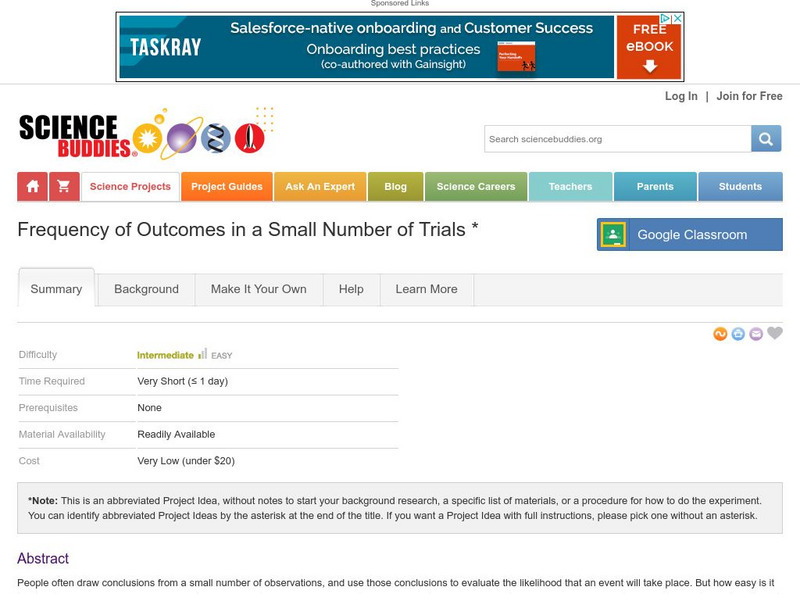National Geographic
National Geographic: Observing Physical and Cultural Landscapes
In this lesson, students examine photographs of Europe as they learn to distinguish between physical and cultural characteristics of a landscape, and make observations and inferences about the places and people in the photographs. They...
BioEd Online
Bio Ed Online: Making a Water Cycle
In this lesson students are required to observe a simple model of the water cycle constructed of sand and ice in a plastic shoe box.
Huntington Library
Huntington Library: Making Community Measurements: Which Plant Part? [Pdf]
A lesson in observing a plant or plant community in different seasons for the purposes of recording observable changes.
University Corporation for Atmospheric Research
Ucar: Make a Tornado
Students explore factors that influence why certain areas in the United States have more tornadoes than others and observe a model to visualize what is happening during a tornado.
University Corporation for Atmospheric Research
Ucar: Elementary Globe: To Spread or Not to Spread
Students will explore the difference between the three types of contrails. Then they will make observations of contrails outside, record their observations, and then make follow-up observations 15 minutes later to see how the contrails...
University of California
Ucla: What Makes a Planet
This detailed essay defines planets and compares the characteristics to those of Pluto. Orbital graphs and background information clarify the change in Pluto's categorization. A copy of IAU's Resolution 5 is also contained in this essay.
EL Education
El Education: The Pond Alphabet Book
Students make observations and collect specimens in a local pond and then create an alphabet field guide to demonstrate what they have learned. Alphabet pages are illustrated with original watercolor paintings.
PBS
Nova Teachers: Can Buildings Make You Sick: Classroom Activity
In this lesson plan, participants will build a structure to collect particulates from the air from around the school building. Then observe and analyze the samples obtained to study indoor and outside air pollution.
Globe
The Globe Program: Biosphere
Website from Global Learning and Observations to Benefit the Environment (GLOBE) Program with comprehensive learning and field study resources on the biosphere in which students use materials and data to make observations and learn about...
Nature Conservancy
The Nature Conservancy: Gardens Activity Guide: Habitats
In this lesson students learn how the garden provides habitat for a variety of different animal species. They make observations and collect data to determine which species inhabit the garden. They will investigate relationships among...
NASA
Sci Jinks: What Makes It Rain?
or snow or sleet? Check out this concise explanation and illustration of the water cycle.
Texas Education Agency
Texas Gateway: Physics: The Scientific Methods
By the end of this section, you will be able to explain how the methods of science are used to make scientific discoveries; define a scientific model and describe examples of physical and mathematical models used in physics; and compare...
Alabama Learning Exchange
Alex: Jack's Beans
During this lesson, the classic story of Jack and the Bean Stalk will spark an interest in plants with students. Students will explore the Internet, take a nature walk, and make observations to learn more about plants. A brochure will...
EL Education
El Education: Trees for Everybody Meridian Hill Park Tree Field Guide
An online field guide entitled Trees are for Everybody by kindergarten students at the Capital City Public Charter School in Washington, D.C. The book contains student observations, photographs, and original illustrations which provide...
PBS
Pbs Learning Media: Mapping Landforms and Water Bodies: Lesson Plan
Learn about different landforms and water bodies and the various characteristics that make them distinct from one another in this lesson plan from WGBH. Navigate around a virtual island to unlock information -- including videos and...
University Corporation for Atmospheric Research
Ucar: Icy Winter Weather
When meteorologists forecast a winter storm one of the important predictions they make is the type, or types, of precipitation that are likely to fall. Will freezing rain cause an ice storm? Will ice pellets called sleet leave the ground...
University of Illinois
University of Illinois Urbana Champaign: Surface Features to Consider When Forecasting
This site looks at the important surface features to consider when making a forecast. High pressure and atmospheric pressure is explained. Be sure to use the arrows at the bottom to navigate through this site.
National Geographic
National Geographic: Introduction to Latitude and Longitude
In this lesson, students learn to determine the latitude and longitude of locations within the United States, while making observations about climate and the ways in which these measurements can be useful. Includes maps and discussion...
Science Buddies
Science Buddies: Slime Chemistry
Have you ever wondered how fun toys like Silly Putty, Gak, and Slime are made? These products are so much fun because of the properties of polymers, which make them delightfully bouncy, stretchy, sticky, moldable, breakable, hard, soft,...
BioEd Online
Bio Ed Online: Heart and Circulation: Outside and Inside
In this activity students explore the human heart and circulatory system. To promote deeper understanding of key concepts, the activity also includes a procedure for observing preserved sheep hearts.
Smithsonian Institution
Smithsonian Learning Lab: Looking at Bird Beaks
Use this activity as an introduction to adaptations. Learners will view video clips of birds and formulate their own observations and explanations for the different types of bird beaks and how they are used.
HotChalk
Hot Chalk: Lesson Plans Page: Sink or Float?
This lesson plan is designed to have young children explore the concept of sinking vs. floating by using the skills of prediction, observation and classification.
PBS
Pbs Teachers:journey to Mars: Why Go to Mars?
Explore the technological advancement of 3-D imaging critical to the 1997 Pathfinder mission. Make a pair of 3-D glasses and use them to view Mars images on the Internet.
Science Buddies
Science Buddies: Frequency of Outcomes in a Small Number of Trials
People often draw conclusions from a small number of observations, but how easy is it to draw the wrong conclusion? Here is a simple project that shows the importance of making enough observations before making a prediction.
Other popular searches
- Making Observations Science
- Making Observations Biology
- Ell Making Observations
- Making Observations in Science
- Ell + Making Observations


![Huntington Library: Making Community Measurements: Which Plant Part? [Pdf] Lesson Plan Huntington Library: Making Community Measurements: Which Plant Part? [Pdf] Lesson Plan](https://d15y2dacu3jp90.cloudfront.net/images/attachment_defaults/resource/large/FPO-knovation.png)
